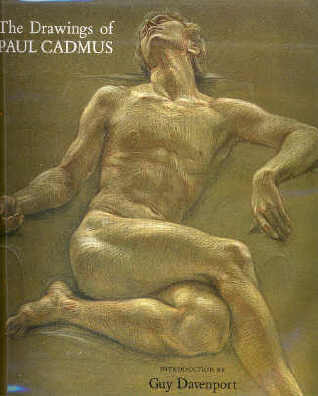- "A Chameleon Book ... produced by Chameleon
Books, Inc., 211 West 20th Street, New York, New York 10011
- Introduction copyright
1989 by Guy Davenport
- Illustrations copyright
1989 by Paul Cadmus
- Compilation copyright 1989 by Chameleon Books, Inc." (verso t-p)
- Creative Director:
Arnold Skolnick
Lettering on book's spine implies Guy Davenport
as book's principal author, although Paul Cadmus' drawings constitute the
major portion of the book. In the book's 'Acknowledgements' -- "Finally, we
wish to thank Paul Cadmus for his time and counsel."
Paul Cadmus (1904-1999).
Born 17 December 1904 in New York; died 12 December 1999 in Weston,
Connecticut. Excerpts follow:
* * *
"The drawings of Paul Cadmus are both
finished works and studies for paintings. As with Ingres, we have two
parallel oeuvres (or three, if we want to count Cadmus's translation of his
paintings into engravings, following the practice of Hogarth). So the
paintings are the middle terms of three media: drawing, painting, engraving.
Quite early in Cadmus's career, the distinction between the graphic and the
painted began to disappear. His meticulous and painstaking brushwork in
tempura became more and more a method of drawing with paint. . . ." (p. 7)
"An artist's style is at once a graphing of
spirit and an in imparting of information. Because drawing is an art, even
mechanical drawings of machine parts or meticulously accurate lithographs of
biological studies have great beauty, despite their being wholly
informational. We may suspect that they are beautiful because they are
saturated with information. A Jackson Pollock of the late period is all
spirit, with no information whatever. So is a Piet Mondrian. In Cadmus, as
in the best of Renaissance styles, there is a perfect balance of spirit and
information.
The realism of a Mantegna or Bellini was a
solidification of things imaginary, of subjects posited by faith and
tradition which no eye had hitherto seen. If the Word was made flesh, then
its realization in paint had to be visually authentic, convincing, and rich
in information. faith is one thing; painting Christ's sandaled feet quite
another. Our eyes red the world at all times; the greater our curiosity and
sensitivity, the more we search for signs and symbols. In the matter of
Christ's feet we want much information, as they must carry immense
meaning in their being washed and dried, in their walking, in their being
nailed to a cross. They bespeak humility, humanity, suffering." (p. 8)
* * *
